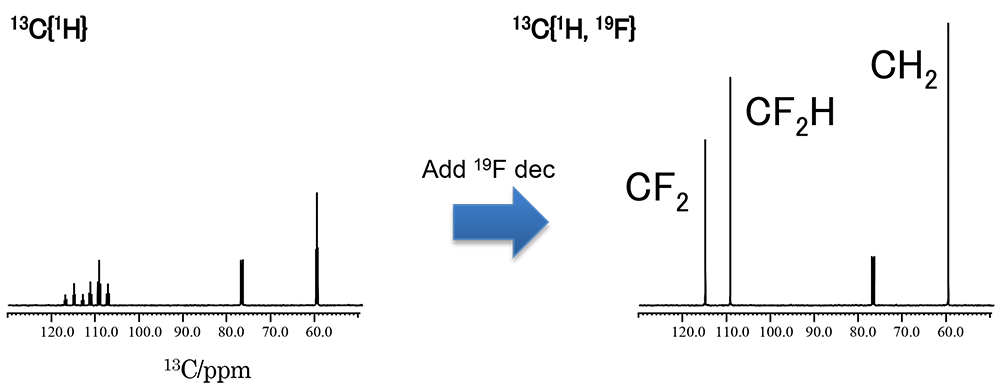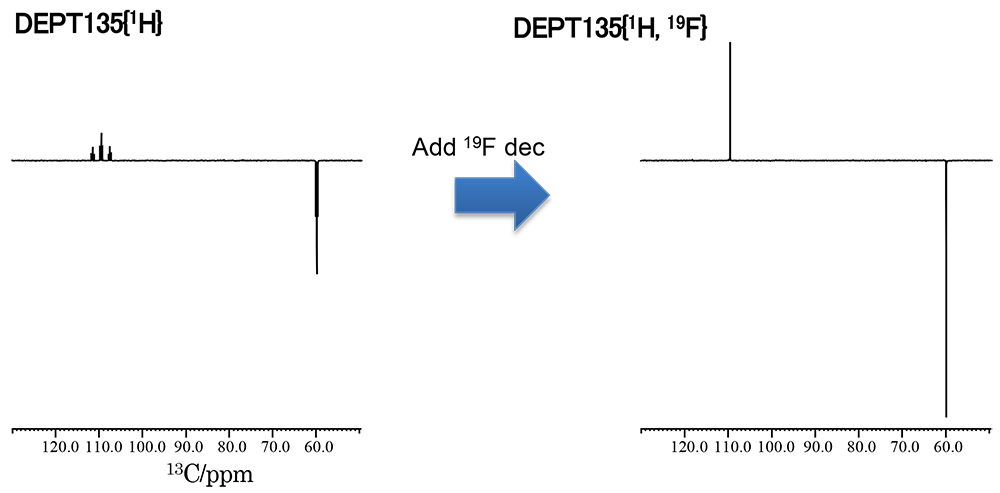Determine number of protons attached to each carbon in fluorine-containing compounds by 13C NMR spectroscopy!
NM170017
We usually use DEPT135 (Distortionless Enhancement by Polarization Transfer) experiment to analyze 13C multiplicity. In the case of fluorine-containing compounds, not only 1H decoupling but also 19F decoupling is efficient. JCF are larger than JCH, and so 13C peaks are often affected even by long-range couplings. In such instances, we can achieve the maximum sensitivity and singlet signals by 13C measurement with simultaneous 1H and 19F decoupling. The figures below show 13C and DEPT spectra of 20% 2,2,3,3-tetrafluoropropanol in CDCl3. You can see that 13C and DEPT spectra are simplified with 19F decoupling.
ROYALPROBE HFX can perform these 1H, 19F, 13C triple-resonance measurement, even with a standard 2-channel console!

13C{1H} and 13C{1H, 19F} spectra, 64 scans

DEPT and DEPT {19F} spectra, 32 scans
- Please see the PDF file for the additional information.
Another window opens when you click. 
PDF 822.8KB
SEARCH APPLICATIONS
Related Products
Solutions by field
Are you a medical professional or personnel engaged in medical care?
No
Please be reminded that these pages are not intended to provide the general public with information about the products.
